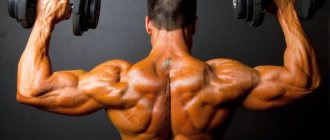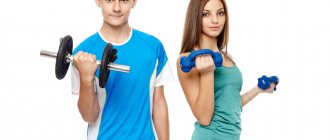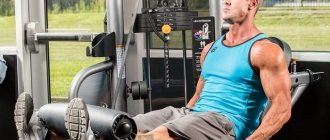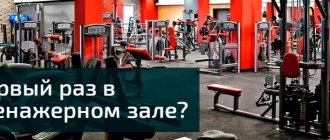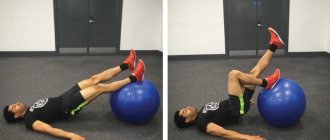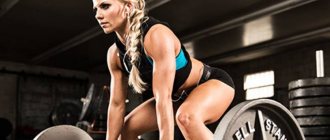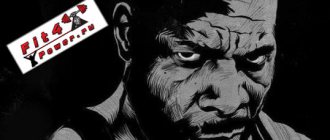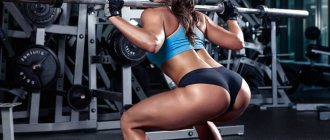Share:
It is known that CrossFit includes several sports areas - one of them is kettlebell lifting. In this material, we have prepared for you the best CrossFit exercises with kettlebells, as well as examples of workouts and WOD complexes.
Kettlebells are an excellent sports equipment and it is difficult to overestimate their importance for CrossFit training. Nevertheless, in a full-fledged complex it is quite difficult to manage with them alone, but if you use them as an auxiliary tool, the effect will be simply wonderful. Therefore, our recommendation is not to neglect exercises with kettlebells in your training!
How to choose kettlebells
Whereas previously kettlebells were sold in weights of 4 kg, 16 kg, 24 kg and 32 kg, now you can find almost any kettlebell weight you want. The greater the weight of the weight, the higher its cost. Depending on the material used, weights are divided into plastic, neoprene, cast iron and steel.
Plastic weights
Ideal for training at home, they do not create much noise when colliding with a surface, and the furniture and floor will remain safe and sound. The downside of plastic weights is that their service life is shorter compared to, for example, cast iron or steel. Although if you buy plastic weights from trusted brands, they will last you a long time.
Cast iron weights
These weights are worth choosing for those who value reliable quality. Cast iron weights have high anti-corrosion properties, they are time-tested and will serve you for a long time. But if used carelessly, cast iron weights can scratch the floor or even cause injury to the user.
Steel weights
Weights made of chrome steel have a pleasant appearance and reliable construction. In addition, such weights are also available with a collapsible design, which is very convenient from the point of view of weight regulation. The price of steel weights is slightly higher.
Neoprene weights
The special feature of this type of weights is the soft neoprene coating. Such weights are not so often found on the market, but they are quite practical and safe. Especially suitable for beginners.
Plastic and neoprene weights are safer to use, they are better suited for home use and are cheaper. Cast iron and steel weights generally last longer and are more reliable over long periods of use.
If you are planning to purchase all-metal weights, it is better to get one that is covered with a rubber or vinyl coating to avoid scratching the floor and not creating too much noise. Weights are filled mainly with sand, cement and metal shavings.
Kettlebell training video
We offer you a selection of 15-40 minute workouts with a kettlebell for home that will help you strengthen your muscles and get rid of excess fat.
1. Full body kettlebell workout (40 minutes)
2. Full body kettlebell workout (30 minutes)
3. Full body kettlebell workout (15 minutes)
4. Interval training with kettlebells for girls (35 minutes)
5. Interval training with kettlebells for girls (20 minutes)
Kettlebells are simple, but very effective sports equipment for strengthening muscles, burning fat, increasing endurance, strengthening the cardiovascular system and the musculoskeletal system. Kettlebell exercises are a great addition to your workout routine, whether you're working on losing weight or building muscle.
- All about fitness bracelets: what they are, how to choose + a selection of inexpensive models
- Top 10 sports supplements: what to take for muscle growth
What exercises are suitable for training at home?
CrossFit is a special system of functional training and physical development. Its advantages lie in its comprehensive approach and the ability to use exercises at home. Classes improve the cardiological and respiratory functions of the body, develop endurance, flexibility, and strength. The use of relatively compact weights that can replace bulky training equipment allows you to perform complexes at home.
There are no restrictions on the direction of exercises. Any workout with weights is suitable for independent home use. You can perform swings, pushes, lunges. Simplified techniques are suitable for independent use even by new products. Workouts that are effective for them at home include bending over with a kettlebell, pushing with both hands, and squats with light weights.
The CrossFit complex uses the maximum number of muscle groups and can be performed in a limited space. It is recommended to combine exercises with weights with push-ups and squats.
Ready-made kettlebell lesson plan
We offer you a ready-made workout plan with kettlebells: for the upper body, for the lower body, for the abs and for the whole body. If you want to work on muscle mass, then perform no more than 15 repetitions with the maximum possible weight. If you want to work on fat burning and definition, then perform exercises for 15-20 repetitions with a medium weight.
If you set aside one day for kettlebell training and plan to train the whole body, you can perform all the suggested exercises in one approach. If you train the upper and lower body separately, you can perform each exercise in several approaches or repeat the exercises sequentially in several circles.
Kettlebell exercises for the upper body:
- Overhead kettlebell rotation: 15-20 reps
- Kettlebell Press: 10-15 reps (each arm)
- Kettlebell Rows for Back: 10-15 reps (each arm)
- Casting: 10-15 reps (each hand)
- Kettlebell Pull to Chest: 15-20 reps
- Push-ups: 10-20 reps (can be done from the knees)
- Kettlebell pullover for triceps: 10-20 reps
Abdominal exercises with kettlebells:
- Mill: 10-15 reps
- Russian twist with kettlebell for abs: 10-15 reps (each side)
- Horizontal running: 20-25 reps (each side)
- Rotation of the kettlebell around the body: 10-15 repetitions (each direction)
- Abdominal sit-ups: 10-15 reps
- Side plank: 30 seconds (each side)
Kettlebell exercises for the lower body:
- Kettlebell Chest Squat: 10-20 reps
- Squat with legs raised: 15-20 reps
- Single leg deadlift: 10-20 reps
- Back lunges with weights thrown: 10-15 reps (each leg)
- Jump squats: 15-20 reps
- Combo squat: 10-15 reps
Full body kettlebell exercises:
- Kettlebell Squat: 10-15 reps (each arm)
- One-arm kettlebell push: 10-15 reps (each arm)
- Kettlebell deadlift: 10-20 reps
- Swing: 10-20 reps
- Lateral lunge with kettlebell press: 10-15 reps (each leg)
- Squats + bicep curls: 10-15 reps
- Turkish get up: 5-7 reps
Kettlebell Training Tips
Be sure to warm up before your workout and cool down after your kettlebell workout. When preparing to perform exercises with a kettlebell, the muscles and ligaments should be well warmed up. Choose the weight of the kettlebell based on your strength capabilities: the last repetition in the approach should be performed with maximum effort. You can start training with a 4 kg (for girls) and 8 kg (for men) weights, gradually increasing the weight of the apparatus. If you already have sufficient training experience, then the average recommended kettlebell weight for men: 16-24 kg, for women: 8-16 kg. During exercises with a kettlebell, keep your back straight and do not slouch. During squats, move your pelvis back to protect your lower back from injury. Try to keep your hands in a neutral position, without any bending. You can use special wrist braces to help you support your joints. Perform each exercise slowly while maintaining complete control. Do not swing the weight and perform exercises quickly and at speed.
Proper exercise form is the most important thing in kettlebell training. If you are working on muscle growth, you should not do kettlebell exercises more than once a week. Kettlebell training allows you to develop endurance and explosive muscle strength, which will help move the plateau and provoke muscle growth
But for anabolic training it is better to use dumbbells and a barbell. If you have two kettlebells available, you can perform exercises using both kettlebells at the same time. Note that in this case the kettlebells should be the same size to avoid imbalance in muscle development. Examples of exercises:
Precautions and Tips
Such exercises are combined with exercises that involve the use of your own weight:
- push-ups;
- pull-ups;
- squats.
Compact exercise equipment is also used. Exercises with weights within one workout are combined with jumping rope and exercises with a fitness band.
An important aspect is the power supply system. For breakfast, it is recommended to eat protein-rich foods and dishes.
Before training, you need to warm up well. This will warm up the muscles, increase their physiological capabilities and avoid damage. With an insufficient level of training, difficulties arise with bench press of a 16 kg weight. Precautionary measures require a secure grip of the heavy sports equipment with your palms. It is necessary to observe safety precautions so that the weight does not slip out of your hands and cause injury.
It is recommended to start regular training with a small weight, gradually increasing it as the muscular system strengthens and develops. Such activities are associated with an increased risk of injury. They require maximum attention, concentration and accuracy. Exercises with straight arms place excessive stress on ligaments and joints, which can lead to sprains or tears.
Basic exercises
Next, we will look at the basic movements that a beginner should start with in the first month of training.
Burpee
Burpees are the most famous exercise in CrossFit. It has become a kind of calling card of this training system. It belongs to the gymnastic class, that is, to work with it you only need your own body and nothing else.
Burpees are great for training endurance, which is so necessary for a beginner in CrossFit.
logo3in1 – stock.adobe.com
Deadlift
Deadlifts are the basis of Crossfit training. The movement comes from weightlifting and works great on the legs, gluteal muscles and back muscles. In addition, it will be a good start for beginner athletes when training with free weights. Thanks to it, you can understand the basic principles of following the technique of performing various lifts of the barbell. Having worked the deadlift properly, it will be much easier to move on to cleans, snatches and jerks.
Pull-ups, squats and push-ups
Let's not dwell long on pull-ups, air squats and push-ups - these exercises are familiar to us from school. They are basic gymnastics for beginners and should definitely be included in the training program.
Jumping rope
Rather, even double jumping rope is a very useful exercise. Refers to the cardio block. Excellent for developing overall endurance and coordination of the whole body. Must be used in training for beginners.
Press press
The barbell shwung press is an excellent strength movement. Refers to weightlifting. Works the legs (calves, buttocks and thighs), the main emphasis is on the deltoids and triceps. Recommended for inclusion in the program for beginners.
Plank
The plank perfectly works the abdominal muscles (abs program in the gym and at home). Perfect for working after the main workout as an additional workout for the core muscles.
Makatserchyk - stock.adobe.com
Sit-ups
Sit-ups or V sit-ups - raising the body from a lying position (in the case of V, raising both the body and legs from the same position). The movement works well for the abs and overall endurance.
Flamingo Images - stock.adobe.com
Kettlebell swings
There are quite a few types of kettlebell swings in CrossFit, but two-arm swings are the basis for inclusion in initial training. They perfectly pump up the legs, buttocks, deltoids, back muscles and core.
Daxiao Productions - stock.adobe.com
Cardio
And, of course, cardio exercises such as running, rowing, air biking should be included in the CrossFit training program for beginners, depending on what exactly is in your gym. If you have everything, great, you will need to alternate. If not, then replace one with the other.
romaset - stock.adobe.com
What muscles are involved?
Kettlebells in CrossFit are used both simply as additional weight and as separate equipment. On one hand, you can pick up a kettlebell and squat it to increase your overall weight. On the other hand, you can do kettlebell swings, and then you will work exclusively with their weight.
There are a huge number of exercises for which a kettlebell is suitable. We can say that with the help of this projectile you can effectively work out almost every part of the body. Let's look at some of them.
Crossfit exercises with kettlebells
Let's not beat around the bush and get straight to the point. A selection of the most effective CrossFit exercises with kettlebells. Go!
Kettlebell swings
There are several variations of kettlebell swings in CrossFit. We will focus on the classic version of the exercise - with both hands. Why is it needed? This is one of the basic exercises that involves several muscle groups at once: the core, hips, buttocks and back. In addition, the exercise perfectly develops explosive strength.
What you need to pay attention to:
- The key point is that your back should be straight at all times during the exercise. Don't slouch or droop your shoulders.
- Place your feet slightly wider than shoulder width.
- The movement occurs due to the extension of the legs and back - the arms in this exercise act as a lever (they should experience virtually no load).
- There are several casting options - from eye level to overhead position. There is no fundamental difference here, with the exception that in the second option you additionally load your shoulders and work on body coordination (the option is a little more energy-consuming).
Kettlebell push (short amplitude)
The kettlebell push exercise, unlike swings, works the following muscles: legs, long back muscles, shoulders, pectoralis major, triceps, biceps and forearms. The kettlebell push, like many other exercises, has several variations - we will focus on the version with a short range of motion.
- Starting position: legs slightly wider than shoulders, fully straightened and relaxed, arms folded on the chest - wrists facing each other.
- The start of the exercise begins with the legs - you do a shallow squat to accelerate; the body leans back slightly (so that the support for the projectiles is your chest, not your arms).
- Next, you must make a powerful push with your legs and back in such a way that at the top point of acceleration you stand up slightly on your toes.
- Next, the amplitude of the movement of accelerating the weights continues with the help of your arms and shoulders, at the same time you seem to sit under the apparatus. As a result, you should find yourself in a half-squat position with your arms extended above your head (Figure 4).
- Next, you complete the exercise by fully straightening with your legs. The arms remain straight above the head.
Kettlebell Front Squats
Often in CrossFit exercises, kettlebells are used as weights for already familiar gymnastic exercises - for example, classic squats. There are several variations of this exercise - with two, with one at the chest, with outstretched arms and with lowering the weight to the floor. We will focus on the classic version - squats with a kettlebell at the chest.
The technique of performing the exercise is similar to classic squats
Important:
- Starting position – legs slightly wider than shoulders, the projectile pressed tightly to the chest in two hands.
- When performing a squat, do not forget to try to move your pelvis back, keep your back straight, and also keep the apparatus as close to your chest as possible.
Exercise technique:
- Starting position – feet shoulder-width apart, arms perpendicular to the floor, back straight, looking straight ahead.
- Next, we lunge with one leg: the position of the arms remains unchanged, the back is straight (do not fall forward), and the knee gently touches the floor.
Kettlebell row to the chin from a squat
And the final exercise we’ll talk about today is the kettlebell row from a squat. This exercise is also regularly used in CrossFit training programs.
It’s quite simple to do, let’s look at the technique step by step:
- Starting position: squat, legs wider than shoulders, back straight, looking straight ahead. Both hands are below, located slightly in front of the legs exactly in the middle.
- We make a powerful jerk using our legs and back, and at the same time we pull the projectile to the chin by spreading our arms. Palms and elbows should be at shoulder level. (no need to go higher, lower too).
This exercise actively involves the muscles of the legs, back, shoulders and triceps.
Let's watch the video of all the best CrossFit exercises with kettlebells! 34 pieces:
Alternating kettlebell swings
For this exercise, you will need relatively light weights so that you can easily perform each arm separately. Thus, the shoulder girdle is well worked out, especially the front and central beam.
In addition, the exercise develops grip and forearm strength well, and also engages the core stabilizer muscles.
- Stand up straight, take a weight in each hand with an overhand grip;
- In the initial position, the arms with weights hang freely along the body;
- Raise your outstretched arm forward so that it reaches shoulder height—no need to raise it any higher;
- Hold your hand at the highest point for a second, then slowly lower it, and repeat for the other hand.
During the exercise, you must keep your back straight and not slouch. There is also a variation of the single kettlebell swing. The exercise has a slightly different execution technique, so it will be considered separately.
Training program
You can create a circuit training program from these exercises. Movements are performed one after another, according to a timer or counting. If you select a timer, you should set it to 40 seconds, the approximate number of repetitions will be indicated below. The athlete rests at the end of the circle for 1-2 minutes, and then moves from one exercise to another.
| Exercises | Repetitions |
| Kettlebell Squat Push | 12 |
| Swing the kettlebell in front of you | 15 |
| Deadlift with kettlebell | 15 |
| Eight | Within 30 seconds |
| Kettlebell hand press | 12 |
| Kettlebell crunches | 20 |
The second workout is continuous movement. The option with a timer is more preferable, as it will help you keep the pace better.
Kettlebell training can also be of a purely aerobic format - for example, a kettlebell swing is performed for 20 seconds, rest for 10, 8 cycles, then in the same mode - pushes, rows, push-ups, deadlifts, kettlebell swings and simple crunches. This cycle is suitable for fat burning. It is not necessary to perform it with a heavy weight, you can choose lighter ones, the main thing is to move dynamically.
The workout begins with a light aerobic warm-up, for example, walking around the room for 10-12 minutes, and then a joint warm-up is performed. You need to perform circular rotations with your arms and legs, flexion and extension at all key joints, and then one circle of weightless squats, push-ups, and crunches. This will allow you to warm up properly and train without injury.
Top 5. The most powerful exercises with kettlebells!
Watch this video on YouTube
Lunges and jumps
Do five rounds of the two exercises as fast as you can.
- 15 Frontal lunges with a barbell. Those. The bar should not be on the trapezius as usual, but on the shoulders, as in a front squat. During lunges, your knees should lightly touch the floor.
- 60 jumping ropes. In Crossfit, athletes often use double cable rotations per jump, and if you have this technique, perform 30 double rotation jumps instead of 60 standard jumps.
Set a timer for 10 minutes and during this time do as many circles as you can from the following 3 exercises:
- 10 kettlebell swings.
- 10 box jumps. This is one of the most popular exercises in Crossfit. The athlete jumps onto a box 50-60 cm high with both feet at the same time. On the one hand, this can be scary, but if you plant your feet firmly on the surface of the box, then you may even enjoy the exercise.
- 10 ring dips. Rise up on the rings so that your arms are level with your armpits ⇒ straighten your arms - this is one repetition. If you don't have access to the rings, use regular bars.
In 8 minutes, complete as many circles as you can. The term AMRAP is as many rounds as possible.
- 8 Burpee box jumps. There are two Crossfit exercises used here. Stand in front of a box, do a classic burpee, then jump onto the box and jump back down.
- 16 kettlebell swings.
Single leg pistol squats
Pistol squats will help develop flexibility, coordination and balance. But if you have problems with your knees, then it is not recommended to perform this exercise without consulting a doctor.
Exercise technique:
- start squatting on your right leg, keep your left leg straight, do not touch the floor with it;
- Stretch your arms forward for balance;
- at the lowest point, the left leg is almost parallel to the floor, while you need to squat below parallel (i.e., the thigh of the working leg (the one on which you squat) should fall below parallel with the floor);
- with a powerful movement, still without touching the floor with your left foot, stand up, returning to the starting position.
You can perform pistol squats by alternating your working leg, or you can do the required number of repetitions on one leg and then on the other.
How to make a pistol if you are a beginner and still can’t do it?
You can perform auxiliary exercises (see video below):
- Regular squats on two legs - but place one foot on an elevation (dumbbell, pancake) - this way the load will be greater on the leg that is on the floor.
- Pistol squats on a chair. Squat on one leg, holding the other in weight. Use a chair/bench to make the exercise easier.
- Pistol squats with one hand holding the loop of a pulley machine.
- Pistol squats holding onto a bench. Raise the bench (as during), grab the top of the bench with your right hand (you will squat on your right leg), and with your left hand hold the toe of your left foot while performing the exercise.
- Pistol squats, holding the toe of your left foot with your left foot while performing the exercise (squat on your right).
Auxiliary exercises in order of increasing difficulty: 1 – the easiest, 5 – the most difficult. If you can do 10 reps of an exercise, move on to a more difficult one. Over time, with the help of these auxiliary exercises, you will be able to make a “pistol”
Romanian kettlebell deadlift
The exercise helps to stretch the lower back and buttocks, and is excellent for their comprehensive training.
- Take the weight by the handle, your hands should hang down freely with it at approximately the level of your feet;
- The back is straight, the legs are slightly wider than shoulder level;
- Tilt your pelvis back, slightly bending your knees;
- The body should lean forward during a squat, but the back should remain straight;
- Hold this position for a second, then return to the starting position.
The exercise can also be performed with a light kettlebell as a warm-up before performing complex exercises such as deadlifts.
How exercise affects the muscles of the body
Squats with weights are great for training your leg muscles. A regular squat uses only your own body weight, but simple squats performed regularly will make your legs beautiful and strong. How much does the result improve if you squat with weights, gradually increasing the load? Experts say that the result improves by 70%.
High lift deadlifts train the muscles in the shoulder girdle and arms. They are the ones who work when the weight is pulled to the chest. Endurance improves, because the exercise is performed with synchronization of movements and breathing. However, this can be attributed to each of the exercises in this complex.
The Romanian deadlift trains the arm muscles. Due to the tilt of the body, the lower back is also affected. She is strengthening.
Kettlebell swings are a very ancient exercise that was used by ancient warriors. Develops hand strength and coordination of movements. Such training has long helped people become better at wielding edged weapons. As an option, advanced kettlebell lifters release the kettlebell from their hands during the swing, spinning it in the air, and then catch it.
The Renegade Row is a unique exercise that develops both muscle and coordination. The athlete has to balance on one hand. In the advanced version, the hand rests not on the floor, but on the handle of the second weight standing on the floor.
The given set of exercises for CrossFit with kettlebells is unique. Be sure to include it in your training programs. By training regularly using this method, an athlete is able to significantly improve his results in this sport, which has become so popular.
Within the walls of the “YourRevolution1905” club, we are ready to professionally help you tighten your body and improve your physical shape. Whole sets of exercises developed by certified specialists, nutritional recommendations, “smart” weighing and much more, all this will help you achieve your goal as effectively as possible.
The kettlebell is a universal apparatus with which you can diversify any program. In addition, it can also be used as a simple weight when you need to use additional weight.
The undoubted advantage of using kettlebells is that they can be used to work every muscle group of the body, depending on the exercise. In addition, with the help of such a projectile you can create an effective program for home workouts.
In addition, the weight of the weights is limited. That is, you will not be able to properly train for muscle mass - since you will have to use either weights that are too light or too heavy for you. You won't be able to gradually increase the load as you would with dumbbells or weight plates.
Using kettlebells in CrossFit requires one more factor. You can achieve the correct execution of the exercise only if you have a strong grip. This is especially true with heavy weights - you can easily pull it with the target muscle, but whether it will slip out of your wrists or not is another matter.
Therefore, we can say that working with this sports instrument is more suitable in CrossFit programs with weights for men
For girls, it’s better to pay attention to dumbbells and other types of weights
Video Kettlebell Press
Features of working with projectiles
It is recommended to engage in a high-speed program with weights for those people whose bodies are ready for high physical activity. Because when exercising with light weights, you cannot quickly gain muscle mass. After all, the weight of dumbbells has certain limitations; they are usually very light. But the weight of the kettlebell varies from 4 kilograms to 32, usually in many gyms the maximum weight of kettlebells is 16 kg.
The 16-kilogram projectile is ideal for those men and women who want to get their body in order and increase their endurance.
The most convenient weights are dumbbells, but their weight is usually not enough to thoroughly pump the muscles. They are used only for weight loss and restoring muscle tone. Therefore, a person who wants to pump up his muscles can only work with either a barbell or a kettlebell.
Working out with a barbell is quite difficult, so beginners are recommended to use kettlebells. Beginners are advised to start training with a minimum kettlebell weight, gradually increasing it to 16 kilograms for women and 32 kilograms for men.
The kettlebell is an almost ideal apparatus for developing the body's strength endurance. Exercises with this apparatus allow you to develop almost all muscle groups. At the same time, the kettlebell is not a technically complex piece of equipment. You can master the correct technique for lifting it in just a couple of lessons!
Fundamental Principles of CrossFit Training
The main principle of CrossFit training is the correct alternation of exercises. When building a training program, exercises that use the same muscles should not be placed nearby. The expression “the main thing is quality, not quantity” comes in handy here. Before starting to master this type of training, the trainer selects an individual exercise technique for each athlete. Despite the fact that CrossFit can be done at home, it is still worth seeking the help of a trainer at first. The help of a professional will be useful for “laying the necessary foundation.” The training itself is usually divided into three segments: weightlifting, gymnastics and cyclic training.
As with any other type of physical exercise, special attention should be paid to execution technique, on which the effectiveness of the entire program depends
In CrossFit, exercises are performed in rounds. Round - performing a given number of exercises in the complex. When working with the classic program, perform 5-7 rounds, after which rest until the oxygen supply in the body is completely restored.
Recommendations for performing the exercise
What are the important points when performing this exercise? Pay attention to the following nuances:
- Firstly, when reaching the lower phase of the amplitude movement in the exercise, it is necessary to protrude the tailbone back as much as possible. Otherwise, the lower back under the shifted center of gravity is subjected to excessive stress.
- Secondly, watch the movement of your knees. Again, due to the changed load and overall center of gravity of the body, you need to ensure that your knees are aligned with your toes. Any deviation from this trajectory greatly harms the joints.
- Breath. Due to the static load, proper breathing must be constantly monitored. In particular, exhale only when rising.
To preserve the knee joints, the exercise is done at a relatively fast pace, but the legs at the knee joint are not fully extended, and a slight tilt of up to 5 degrees is maintained.
It is best to use triple insurance when performing the exercise (especially at first):
- weightlifting belt - to preserve the muscles of the lower back;
- straps for holding weights with the muscles of the forearms - since for many, the static load may be excessive at first;
- knee pads and elastic bandages that secure the joint.
Complexes with kettlebells from CrossFit
These workouts appeared on the main page of the official CrossFit website, and were quite popular.
"Dirty 50 with a Kettlebell"
The focus of the complex is strength endurance and general physical fitness. You need to perform 50 repetitions of each exercise, moving from one to another. It is not forbidden to break the complex into parts, that is, perform it in 5 circles of 10 repetitions.
Subsequence:
- Pull-up (rubber or kipping);
- Classic deadlift (guys 60 kg, girls 40 kg);
- Push-ups with palms raised (classic for CrossFit, you need to lie on the floor and raise your palms);
- Swings or swings, full (24 and 16 kg, respectively);
- Classic squats with a barbell (60 or 40);
- Raising the knees to the elbows while hanging on the horizontal bar;
- Thrusters with dumbbells or kettlebells (16 and 8, respectively);
- Lunges, weights at the top (the sequence is the same);
- Burpee with jump
It is forbidden to switch movements or perform them with too much rest. The option with crushing and rest is, in principle, considered non-competitive, “beginner”. If the complex takes more than an hour, you should stop and proceed to a cool-down.
CrossFit and Kettlebells. WOD - MINOTAUR! Progression of movements and special warm-up. Crossfit IDOL #37
Watch this video on YouTube
"Lazy"
This is a strength complex, men do it with two-pound weights, women with one-pound weights. Beginners can use 8 kg.
Do it with both hands:
- 50 repetitions of the push;
- The same number of jerks;
- The same number of kettlebell swings
Important – you can do 25 with each hand; if you don’t feel strong enough to complete the complex, reduce the weight, but don’t stop. Professional athletes can complete this complex in 5 minutes
300 or "Three Hundred Spartans"
This complex must be performed as prescribed, without changing movements. Doing it in circles is prohibited. Beginners can vary the exercises as above.
- 25 pull-ups (kipping, or rubber), beginners can replace with negative pull-ups - from a chest jump to the bar, plus a slow lowering, then 5 repetitions are performed;
- 50 classic deadlifts, 60 kg, or less weight if the athlete is not physically ready. Deadlifts are performed from large plates or a plinth, and not from short “fitness” plates;
- 50 push-ups with arm raises. Those who cannot do push-ups can do a complex with a bench, but you should strive for the usual classical technique;
- 50 box jumps 60 or 75 cm;
- 50 “climbers”;
- 25 kettlebell pushes from the floor from each hand, 24 and 16 kg, respectively;
- Again 25 pull-ups, same load adaptation
"Georgie"
This routine is fairly short and can be done with minimal equipment, which doesn't mean it's only suitable for beginners. Experienced athletes should try to work in a high-speed, explosive manner to get the full benefits of the exercise.
As many rounds as possible within 21 minutes:
- 7 burpees;
- 11 push-ups;
- 22 kettlebell swings
Execution technique
Technically correct execution of the exercise is only possible with adequate weight. Kettlebell fitness experts recommend that women start with a weight of 8 kg, and men - 16 kg. It makes no sense to use smaller projectiles, since the core cannot be used with them.
Classic version
The most difficult thing here is taking the projectile in the stance. The tilt is performed by flexing the hip joint, and the athlete grasps the kettlebell or dumbbell with both hands on both sides. Then, due to extension in the pelvis with slightly bent knees, the weight is placed on the chest
It is important to “substitute” your chest under the weight so that it loads the center of the body, and is not just held by your hands. During the lift, the back is tense, the shoulder blades are brought towards the spine, the abs are tightened. After taking, stabilization follows
You should not immediately bend your knees and sit down. The athlete must stabilize the center of the body so that the weight rests firmly on his chest and does not slide. The point is to redistribute the weight between the body and arms so that the athlete does not overexert himself and does not squeeze the weight with his hands. This is an important skill, it is practiced separately. If you don’t work it out, you won’t be physically able to lift a normal weight of weight onto your chest.
After capture comes stabilization. You should not immediately bend your knees and sit down. The athlete must stabilize the center of the body so that the weight rests firmly on his chest and does not slide. The point is to redistribute the weight between the body and arms so that the athlete does not overexert himself and does not squeeze the weight with his hands. This is an important skill, it is practiced separately. If you don’t work it out, you won’t be physically able to lift a normal weight of weight onto your chest.
After stabilizing the weight, you need to place your feet so that the heels are slightly wider than the pelvic bones, approximately at the level of the middle delta. The toes of the feet are spread to the sides, as convenient as possible. The athlete bends the knee and hip joints, and at the same time drives the knees towards the toes.
The bottom of a squat is the point at which the pelvis drops below the knee. Ideally, the thigh is in full contact with the shin. Achieving such depth should only be achieved by those athletes who can avoid the “pelvic dive,” that is, turning the pelvis at the bottom of the squat in the opposite direction.
This option allows you to fully stretch your gluteal muscles and use them to start from the bottom. The buttocks contract, the impulse is transmitted to the thigh muscles, the knee and hip joints extend. The goblet should be one, unified movement, in which there is no room for tilting the body, or moving the pelvis upward due to active contraction of the back muscles and upward thrust of the hips.
The point of the exercise is to keep the projectile in front of your chest at all times. Other implementation options are not allowed.
Goblet Squat / Goblet Squats. Crossfit
Watch this video on YouTube
Sumo option
The goblet squat in sumo refers to the same movement with very wide feet. So much has not been written about its benefits. Some people believe that this way the quadriceps are turned off from work, but in fact, this option does not turn off the quadriceps, but simply leads to the fact that the adductor muscles of the thigh are included in the work
Therefore, those who are afraid to pump themselves up at least something should pay attention to this valuable information
The sumo variation requires significant flexibility and mobility in the hip joint. The athlete takes a wide stance, knees pointing almost to the sides, feet turned out strongly. The movement of the knee joint is in the same direction as the toes, that is, not in a plie, but in a slightly smaller angle. It is advisable to lower the buttocks below the knee joint.
The movement is considered beneficial for the development of the gluteus medius muscle, since pushing out the weight occurs due to the contraction of this particular muscle.
Get under the bar as quickly as possible
Quickly getting under the bar is a scary part of any weightlifting exercise, so common sense tells you to get the bar as high as possible before diving and catching it. But the reality is that the longer you wait before going under the bar, the harder it will be for you to face it later.
“When I visited CrossFit gyms and watched people doing the snatch, I noticed that the most common mistake was to take too long in the snatch phase,” says Pendley. “In other words, after the bar reaches their hips, they continue to pull it up until the bar is already somewhere at chest or shoulder level, and only then they try to sit under it. But that's too high.
As soon as the bar leaves your thighs, you should immediately fall under it rather than continue to try to lift it higher. People pay too much attention to lifting the barbell, but not enough attention to diving under it - this happens in both the snatch and the clean. You just need to lift the barbell up to the level of your belly button so you can then clean it on your chest. The thighs are very strong. If you continue to pull the barbell up with your arms, then yes, you will lift it higher, but at the same time you will slow down, because your arms cannot produce as much force as your hips.”
Ilya Ilyin, a two-time Olympic champion and holder of world records in the clean and jerk and the sum of two exercises (w/c up to 94 kg), said the best thing about this topic in one of his videos: “It’s simple. He blew it up and fell like a stone.”
If this concept seems meaningless to you, then think about physics. When you snatch or clean, the barbell moves up from the ground, reaches its maximum height, and then drops back down until you meet it in the squat. If you wait too long before diving under it, then by the time you get under it, it will have already started its way down, in other words, it will have started falling. An object picks up speed as gravity pulls it down, so the longer the barbell falls, the faster it will move, and the harder it will be for you to meet it.
“Ideally, you should aim to meet the bar at the top of the pull while it has no momentum,” says Pendlay. “If the bar only goes down two or three inches, it is much easier to meet and hold it. And if by this moment it has already flown 18 inches, then it will be extremely difficult to meet and hold it. That’s why you have to start going under the bar while the bar is still moving up.”
Coaching Tips
Glenn has a simple tip for getting under the bar on time: when the bar reaches your hips, start swinging your legs. “I'm not using this tip because I think you should necessarily throw your legs out when doing a snatch,” he says. - "Not at all. But this is a great opportunity to teach beginners not to drag the barbell up for too long.
Because once your feet leave the ground, you can't keep lifting the barbell up. This is the most elementary physics. So maybe you should really make a rule that as soon as the bar reaches your hips, you lift your legs off. To do this, you should lift your feet off the floor at least a little. I don't tell my athletes to lift their legs too high because then they'll get carried away and lift them almost 12 inches, doing what they call a 'donkey kick' that shouldn't be happening."
How to replace the bench press?
A few years ago, I ran into a problem that forced me to look for something to replace the bench press with. During one of my chest workouts, while performing a bench press, I felt a sharp pain in my left shoulder joint. It is clear that I could no longer perform the bench press on a horizontal bench. I had to look for some kind of replacement for this exercise. I found that when performing the bench press on a positive incline bench, there was virtually no pain. Therefore, to work the pectoral muscles, I used two basic exercises - the incline barbell press and the incline dumbbell press. Of course, I started with light weights. After a few months, the pain completely disappeared and I could already perform a bench press on a horizontal bench. But what to do if it is not possible to perform a bench press? What then can you replace this exercise with?
In bodybuilding, all exercises are usually divided into basic (multi-joint) and isolating (single-joint). The bench press is a basic exercise for the pectoral muscles. Therefore, you also need to replace it with a basic exercise for the chest muscles. Replacing a multi-joint exercise with a single-joint one, for example, a bench press with a dumbbell fly or vice versa, is not correct, or rather, not an acceptable option. Only as a last resort, if you do not have the opportunity to replace the bench press with another basic exercise, you can replace it with an accessible isolation exercise for the pectoral muscles.
Let's look at what multi-joint basic exercises for the pectoral muscles are:
- bench press at various angles;
- dumbbell bench press at various angles;
- push-ups on parallel bars with a forward bend;
- Hummer bench press;
- wide grip push-ups.
A better alternative to the barbell bench press is the dumbbell bench press. Unlike the barbell bench press, the dumbbell bench press is a more natural movement and has a greater range of motion, which allows you to use small stabilizer muscles and better work the pectoral muscles.
Bent dips are also a good substitute for the bench press. Tilt of the body forward allows you to shift the emphasis of the load from the triceps to the lower part of the pectoral muscles. Push-ups with additional weight significantly increase the load on the muscles, stimulating them to grow.
To train your chest at home, you can do wide-grip push-ups, but only with additional weights on your back. Push-ups are like bench presses, but in reverse. To evenly distribute the load over the entire surface of the pectoral muscles, place your legs on a small hill. The wider the position of the arms, the greater the load on the chest muscles.
The best exercise for the pectoral muscles
You can often hear that the bench press is the best and most effective exercise for the pectoral muscles. In fact, this is far from the case. The classic bench press is the most popular and common chest exercise, but not the most effective. The fact is that everyone wants to bench press a lot, because the more you bench press, the tougher you look in the eyes of others. If you want to pump up huge and harmoniously developed chest muscles, then I recommend that you perform a bench press with a barbell or dumbbells on a bench with a positive incline, after which you can add dumbbell flyes while lying on an incline bench or crossover curls.
The incline bench press helps distribute the load more evenly across the entire surface of the pectoral muscles. In the case of a classic bench press, most of the load falls on the lower pectoral muscles. In most athletes, it is the upper part of the pectoral muscles that lags behind. Therefore, I always recommend performing incline presses with your head up. The optimal angle of inclination of the back of the bench is approximately 30 degrees relative to the horizontal. Remember that the greater the angle of inclination, the more the load is shifted to the anterior deltoid muscles.
How to replace the French bench press?
Today there are quite a lot of exercises for triceps. However, none of them provide as much progress as the French press. This is achieved through the biomechanics of movement and concentration of the load exclusively on the triceps muscle.
However, despite the accessible technique, some may find it difficult. Because:
- You need to constantly monitor the position of your elbows and at the same time concentrate on the target muscle.
- Some cannot perform the exercise due to damage to ligaments, joints, certain injuries, etc.
- Doing the same exercise for a long time is not recommended. The muscles adapt and the response to the load becomes weaker.
Let's try to look at other triceps exercises that can become a complete alternative to the French press.
No. 1 Close-grip barbell press
A wonderful analogue of the narrow barbell press, it is a basic exercise that loads:
- lateral head of triceps;
- inner chest;
- front delts.
The main advantage is that, unlike the French press, the elbows are not so heavily loaded. Thanks to this, even if you have certain problems, you can work with light weights as part of exercise therapy complexes.
No. 2 Extension of arms in a block simulator
A worthy alternative, however, is more suitable for “polishing” the triceps, as it allows you to achieve relief and endurance. However, if you use the maximum working weight, you can achieve an increase in strength and mass.
But, still, you should not rely on this exercise, since this will not be enough for the triceps alone. Use different handles, perform with two hands or one at a time. In the second case, you can achieve better stretching of the muscle.
No. 3 Lifting dumbbells from behind the head
The biomechanics of the movement are similar to the French press, but there is still a difference due to the fact that the movement does not go straight down, but to the side. Those. the dumbbell moves in the direction of the opposite shoulder, which, on the one hand, relieves the load on the elbow joint, and on the other, puts the most load on the long triceps bundle. At the same time, the remaining beams do not receive sufficient load.
No. 4 Push-ups with emphasis on the bench at the back
An excellent exercise in which you can work either with your own weight or use weights. But, as a rule, in most cases, your own weight is enough. The technique is simple:
- We rest our palms on the bench behind us.
- We stretch our legs forward and leave them on the floor or, to complicate the exercise, we throw them on another bench.
- By bending the arms at the elbows, we lower them as low as possible.
Most of the load goes to the medial fascicle, and the deltoids and abdominal muscles also take an active part.
#5 Push-ups with narrow arms
The biomechanics of the movement are somewhat reminiscent of a close-grip bench press, but we work with our own weight. This engages not only the triceps, but also the inner chest, as well as various stabilizer muscles, ligaments and tendons.
One alternative to push-ups with a narrow arm position is diamond push-ups, which are definitely worth trying. By working with your own body weight, you can increase the strength and volume of your triceps. Also, the use of weights is allowed.
#6 Dips
A great bodyweight exercise that focuses on the lateral and medial heads of the triceps.
It is very important to perform push-ups technically and not spread your elbows to the sides so that the load does not shift to the joints
